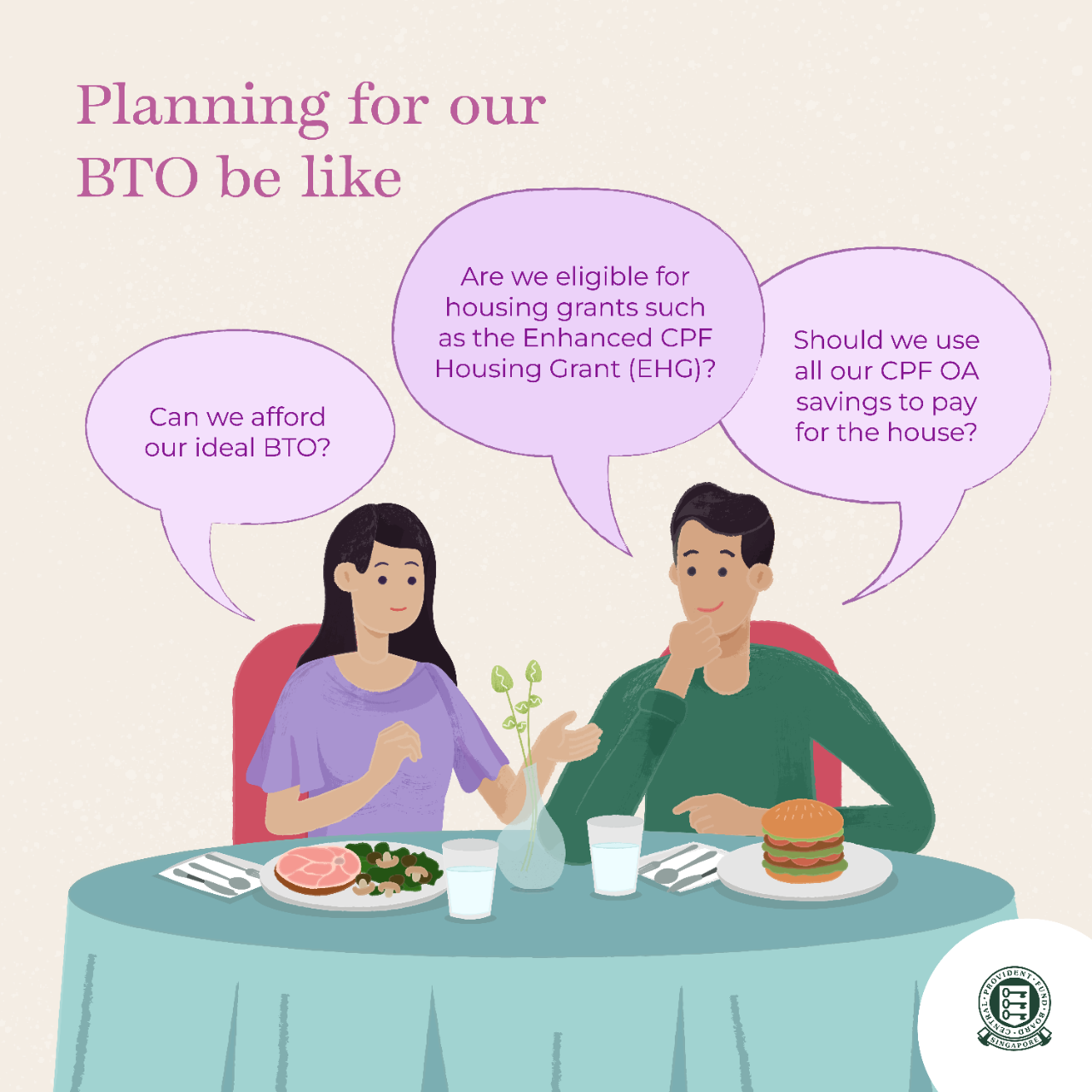10 May 2022
SOURCE: CPF Board
For many Singaporean couples, the next big step in their relationship is getting married and purchasing a home together. This is why the question “BTO ai mai?” has become the de facto way of proposing to your partner.
To avoid looking like a deer in the headlights when your partner pops the question, here’s a quick guide that highlights the important things you need to consider before getting a BTO.

1) Can we afford our ideal BTO?
The first thing to consider is the flat type, which ranges from 2-room Flexi to 5-room. It’s best to discuss with your partner how large you plan for your family to be and choose a flat that suits your needs.
Location is another important factor. Not only does it affect prices, but you may also want to consider the proximity to your parents or amenities like the MRT.
You can use your CPF Ordinary Account (OA) savings to pay for housing. A prudent tip is to keep your monthly housing instalment within 25% of your gross monthly income, so that you won’t overstretch yourself financially. You’ll also need to take note of the upfront costs, such as downpayment, stamp and legal fees and renovation expenses. Do note that for renovation expenses, they must be paid for in cash.
2) Can we apply for CPF housing grants?
While the cost of your BTO purchase may be intimidating, there are additional aids such as the Enhanced CPF Housing Grant that can help you finance your first home. Eligible first-timer applicants for new flats may qualify for an EHG of up to $80,000. To be eligible, you and your partner’s average gross monthly household income should not exceed $9,000 for the past 12 months. At least one of you must also be employed for the past 12 months and remain in employment when applying for the flat.
Grant amount for first-timer households
Average Monthly Household Income |
EHG Amount |
Not more than $1,500 |
$80,000 |
$1,501 to $2,000 |
$75,000 |
$2,001 to $2,500 |
$70,000 |
$2,501 to $3,000 |
$65,000 |
$3,001 to $3,500 |
$60,000 |
$3,501 to $4,000 |
$55,000 |
$4,001 to $4,500 |
$50,000 |
$4,501 to $5,000 |
$45,000 |
$5,001 to $5,500 |
$40,000 |
$5,501 to $6,000 |
$35,000 |
$6,001 to $6,500 |
$30,000 |
$6,501 to $7,000 |
$25,000 |
$7,001 to $7,500 |
$20,000 |
$7,501 to $8,000 |
$15,000 |
$8,001 to $8,500 |
$10,000 |
$8,501 to $9,000 |
$5,000
|
3) Should we use all our CPF OA savings to pay for the house?
Homeowners can choose to pay for their home loan using their OA savings. An advantage of doing so is the ability to control your cash flow and having spare cash on hand. However, you’ll miss out on earning interest rates of up to 3.5% per annum* on your OA savings. It is recommended to set aside at least $20,000 in your OA upon taking up a home loan. The monies set aside in your OA can act as a safety net for your housing payments and will also form part of your retirement fund.
Do note that should you decide to sell your property in the future, you’ll need to repay any CPF savings used to finance your house, with accrued interest included as well. This is because using your CPF for property reduces your retirement savings. Hence, in order to restore your savings, and not be worse off than someone else who didn’t use theirs, there’s a need to refund your CPF. However, you can always use your OA savings again for your next home purchase.
Having kept all these considerations in mind, you’ll be well prepared when your partner pops the golden question!
*Includes extra interest. Terms and conditions apply.
Information in this article is accurate as at the date of publication.
.jpg)

